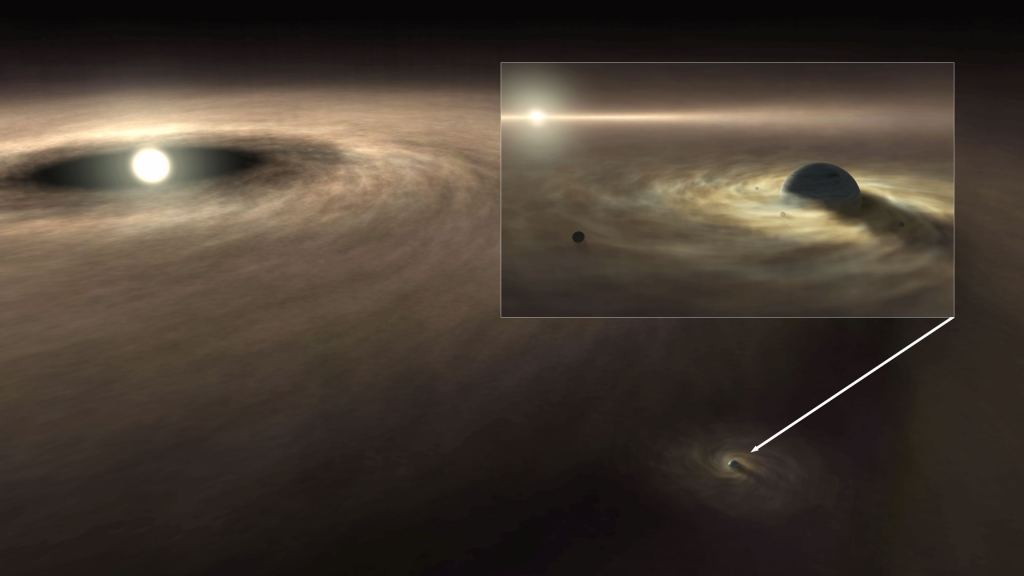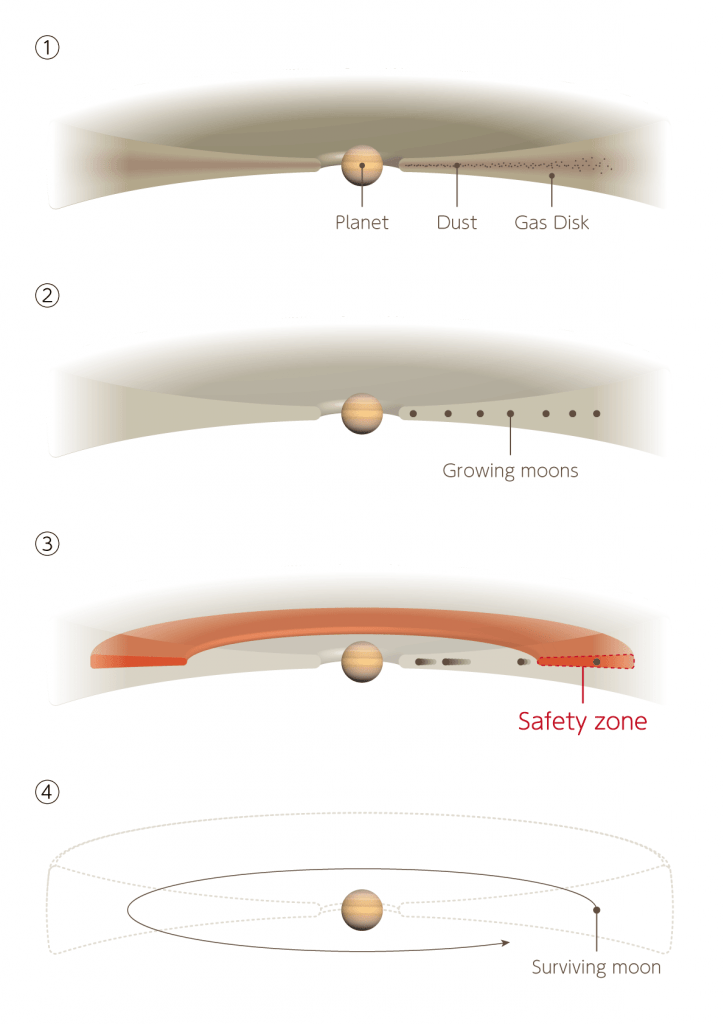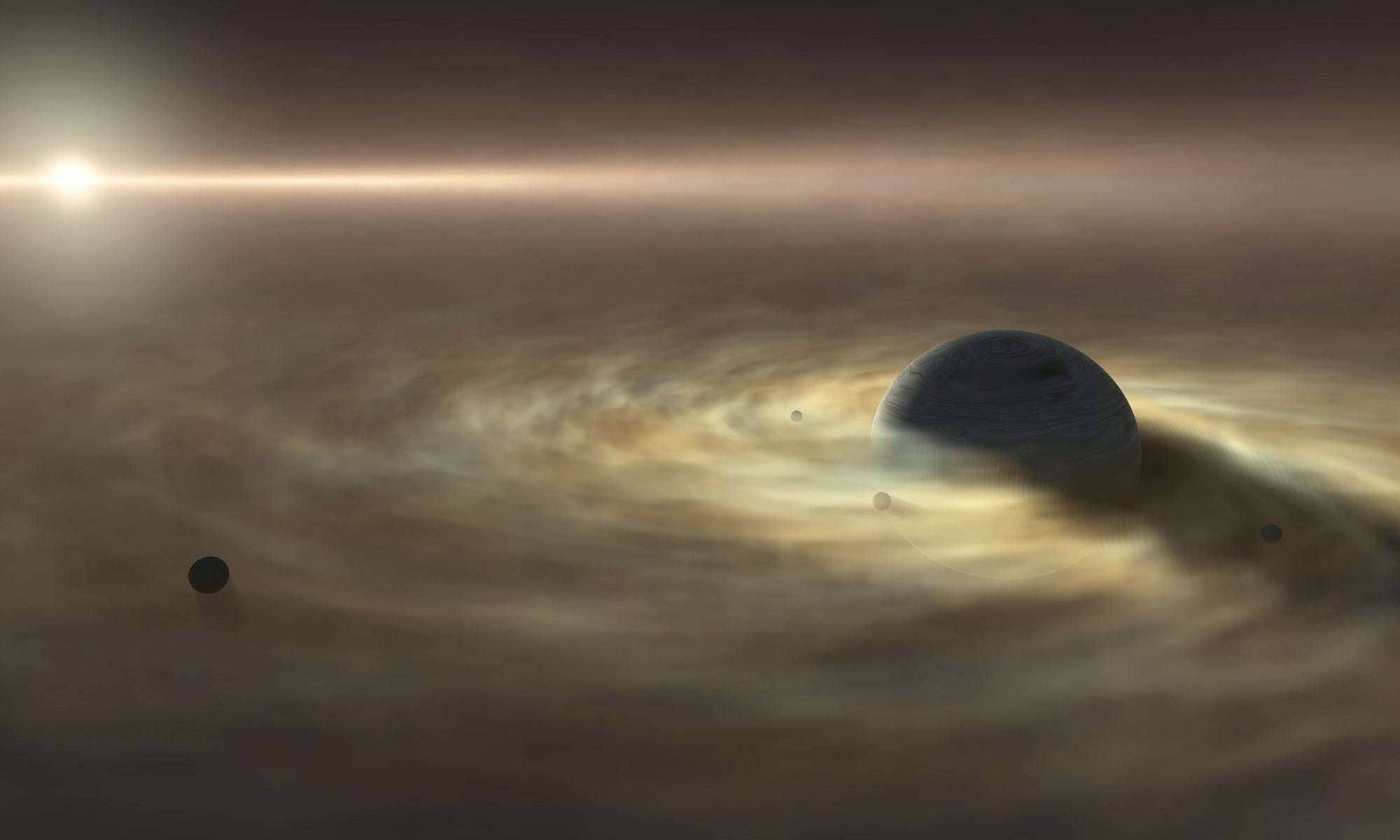Beyond Earth’s only satellite (the Moon), the Solar System is packed full of moons. In fact, Jupiter alone has 79 known natural satellites while Saturn has the most know moons of any astronomical body – a robust 82. For the longest time, astronomers have theorized that moons form from circumplanetary disks around a parent planet and that the moons and planet form alongside each other.
However, scientists have conducted multiple numerical simulations that have shown this theory to be flawed. What’s more, the results of these simulations are inconsistent with what we see throughout the Solar System. Thankfully, a team of Japanese researchers recently conducted a series of simulations that yielded a better model of how disks of gas and dust can form the kinds of moon systems that we see today.
Around planets like Saturn, large moons like Titan are paired with several smaller moons and hundreds of tiny ones. The situation is the same with Jupiter and Uranus, which have a handful of large satellites that account for the majority of the mass in the system while the rest are small or even tiny by comparison. None of these examples are consistent with what previous models of moon formation have shown.

Addressing this disparity, assistant professors Yuri Fujii and Masahiro Ogihara – of Nagoya University and the National Astronomical Observatory of Japan (NAOJ), respectively – ran a new model of moon formation of that incorporated a more realistic temperature distribution based on varying degrees of dust and ice in the protoplanetary disk.
They then ran a series of simulations with this model that took into account pressure from the disk’s gas and the influence that the gravitational force of other satellites would have. According to their simulations, the model developed by Fujii and Ogihara allows for the development of a system of satellites dominated by a single large moon – as we see with Titan and Saturn.
What’s more, they found that the dust in a circumplanetary disk could create a “safety zone” that would keep the large moon from falling into the planet as the system evolves. The scenario in which this occurs (shown below) consists of four steps, the third of fourth of which occur within Fujii and Ogihara’s simulation.
In step one, a disk containing gas and dust rotates around the planet as it forms and solid materials condense in the disk. In step two, the solid components of the disk grow to the size of the satellite in the circumplanetary disk. In stage three, the orbits of these satellites change gradually due to the influence of gas in the disk.

It is from this point onward that many of the satellites draw closer to the planet in their orbits and eventually fall into it. Meanwhile, a large satellite with an orbit in a “safety zone” is able to maintain its distance from the planet. In the fourth and final stage, the gas in the disk dissipates and the satellite that survives in the “safety zone” remains in a stable orbit.
“We demonstrated for the first time that a system with only one large moon around a giant planet can form,” said Fujii in a recent CFCA press release. “This is an important milestone to understand the origin of Titan.”
However, the model has limitations when it comes to Titan and other moon systems in our Solar System – all of which formed billions of years ago along with the Solar planets. On the plus side, it could prove very useful to astronomers who are currently studying exoplanet systems that are still in the process of formation. As Ogihara explained:
“It would be difficult to examine whether Titan actually experienced this process. Our scenario could be verified through research of satellites around extrasolar planets. If many single-exomoon systems are found, the formation mechanisms of such systems will become a red-hot issue.”
The study that describes their findings, titled “Formation of single-moon systems around gas giants“, recently appeared in the journal Astronomy & Astrophysics. And be sure to check out this video
Further Reading: CFCA, NAOJ, Astronomy & Astrophysics

